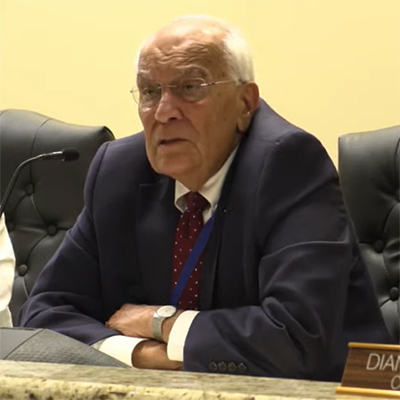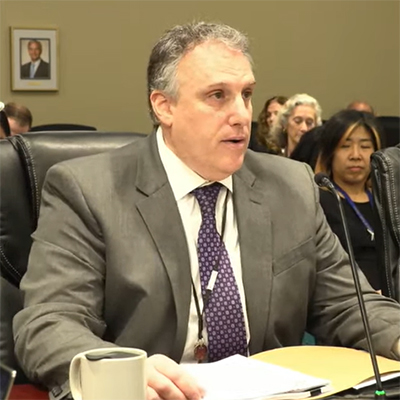
A study released Wednesday by the New Jersey Board of Public Utilities of the ratepayer impact from the state’s ambitious Energy Master Plan concluded that clean energy-conscious residents could see a 16% cost reduction under the plan.
But one board members immediately rejected the report, saying it ignored key costs.
The report, by The Brattle Group, sought to address the long-running concern from business groups, Republicans and others that the state had never calculated the cost of the state pursuing an aggressive set of climate change policies outlined in Democrat Gov. Phil Murphy’s 2019 Energy Master Plan.
Brattle quantified the total energy cost in 2030 for average customers, compared to the cost in 2020, and then assessed the 2030 ratepayer cost in various scenarios. They included the cost to ratepayers who adopted no energy efficiency or clean energy measures, those who adopted some measures — such as switching from a gasoline-powered vehicle to an electric vehicle — and those who embraced all available clean energy initiatives.
 BPU President Joseph Fiordaliso | New Jersey Board of Public Utilities
BPU President Joseph Fiordaliso | New Jersey Board of Public Utilities
The report found that the average non-low-income residential customer spent approximately $4,800/year in 2020 for electricity and natural gas bills and fuel costs for driving a non-electric car. Without any changes to their energy use, that figure would rise 16.7% to about $5,600 in 2030. About half the increase would be from the cost of the state adopting clean energy measures and the other half from inflation, the report concluded.
But the same customer in 2030 would save an equivalent amount if the they drove an EV, electrified their home and adopted energy-efficiency measures, the study concluded.
“The key here is energy efficiency,” BPU President Joseph Fiordaliso said at the board’s meeting Wednesday, shortly before it voted 3-1 to accept the report. ”The report we’re accepting today demonstrates that energy costs will be reduced for those ratepayers who embrace energy efficiency and electrify their homes and vehicles.”
Commissioner Zenon Christodoulou, who only joined the board Monday, did not vote on the report, nor on any other items at the meeting, saying he still needed time to become fully informed of the issues.
Calculating Costs
 BPU Commissioner Dianne Solomon | New Jersey Board of Public Utilities
BPU Commissioner Dianne Solomon | New Jersey Board of Public Utilities
Commissioner Dianne Solomon voted against accepting the report, saying it was unusable as an aid to drafting policy.
“After reviewing the extensive stakeholder comments on the rate impact study, it is clear that there is agreement on all sides that the impact study missed the mark,” she said at the meeting. “No one should contemplate using this study to inform policy decisions on future BPU and utility programs.”
Solomon said the report “fails to provide to us as commissioners or the ratepayers we serve with the information that this report was supposed to give.” Specifically, it ignores some key factors that will contribute to consumer costs under the state’s clean energy strategies, such as capital costs.
Solomon’s concerns echoed those of business groups at a March 29 public hearing at which Brattle officials outlined their proposed framework for the study. The Chamber of Commerce of Southern New Jersey, for example, argued at the meeting that the report would not consider the capital costs needed to electrify a property.
At the same hearing, environmentalists argued that the report would exclude an estimation of benefits of clean energy, such as the reduced health care costs and the repair costs avoided because bouts of extreme weather would be less serious if carbon emissions were cut. (See Brattle Study of NJ Energy Master Plan Cost Under Scrutiny.)
Future Study
At a press conference after the meeting Wednesday, BPU staff defended the report, saying the board had from the start said it would focus only on the ratepayer impact.
 BPU Chief Economist Ben Witherell presenting the Brattle Group report | New Jersey Board of Public Utilities
BPU Chief Economist Ben Witherell presenting the Brattle Group report | New Jersey Board of Public Utilities
“We agree that there needs to be additional analysis on the capital costs,” said Abraham Silverman, chief counsel for the BPU. “But you need to have a good understanding of what the benefits are before you can treat the capital costs appropriately.
“For example, if you’re trying to calculate a return on investment … you need to know both the capital costs, and you need to know the benefits. So this is the first step in this process. We have identified now what are the savings associated with the investment.”
BPU Chief Economist Ben Witherell, who presented the report at the meeting, said the board would be looking at capital costs in the future. But the first step is what “most stakeholders were interested in, which was: what are the ratepayers going to be paying for their monthly energy bills to support these policies and programs.”
Low-income Ratepayers
The Energy Master Plan calls for the state to reach 100% clean energy by 2050, mainly by improving energy efficiency and shifting to clean energy generation, mainly wind and solar. It includes a goal of developing generate 7.5 GW of offshore wind power by 2035, with about half that to be generated by three projects so far approved in two solicitations. Another three solicitations are expected, with the first to take place early next year.
The state also has sought to position itself as an offshore wind industry hub, committing $500 million to $550 million to the creation of the New Jersey Wind Port, a logistics and manufacturing hub in South Jersey, and seeking to set up a “flagship” research and development center, both of which would serve not only New Jersey’s industry but also those of neighboring states.
It has also created several programs to incentivize the purchase of EVs, trucks and buses, and to stimulate the installation of electric chargers across the state.
Eric Miller, New Jersey energy policy director for the Natural Resources Defense Council, welcomed the report and said the limitations of its scope were not important.
“Overall, we think that’s a really positive report,” he said. “It’s good to see confirmed that customers who participate in the clean energy transition, whether it’s using an electric vehicle, participating in energy efficiency programs or electrifying their space and water eating, stand to see really big benefits by doing so.”
One especially encouraging element of the report is its conclusion that an aggressive escalation in the state’s approach to carbon emissions reduction would only increase the cost to ratepayers slightly. The report found that if the state shifted from the Energy Master Plan goal of reaching 100% clean energy by 2050, to an “ambitious pathway” of reaching that goal by 2035, the additional annual energy cost for the typical ratepayer would be only about 2% higher.
Miller also cited as important the report’s conclusion that the state should prepare to step up its incentive programs to include low-income residents.
The report found that a low-income resident — one with an annual income of $35,000 — would spend 7.3 to 10.8% of their salary on energy in 2020, rising to 9 to 12.5% in 2030 if they did not embrace relatively expensive energy-efficiency and clean energy methods.
“This implies that energy assistance programs targeting low-income customers may be necessary to help with upfront costs of electrification and energy-efficiency improvements,” the report says. “These programs may range from providing rebate assistance for the purchase of efficient appliances and electric vehicles, to on-bill financing for income-qualifying customers to be able to undertake projects with high initial capital cost requirements.”

